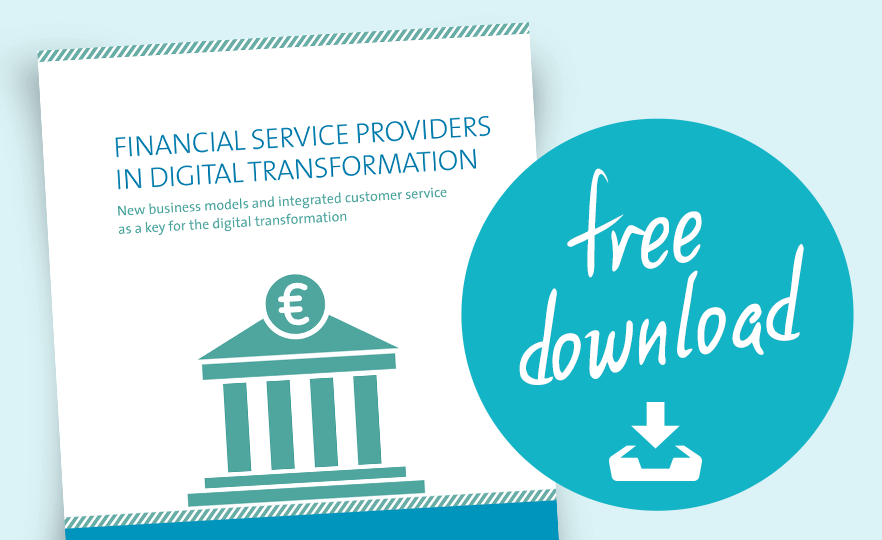Banks are facing profound change at the moment. What’s more, they are doubly affected by the digitalization: On the one hand, the financial industry’s traditional products and services are turned topsy-turvy. On the other hand, banks are more impelled than virtually any other industry to digitalize internal processes and legacy systems. The time for banks to take the right steps towards digital transformation is now. Seeking external advice and integrating intelligent cloud-based solutions, for example, are both great ideas to start with.
Consumers still trust banks — for now
Banks should consider themselves lucky, indeed. In spite of the banking crisis, continuously low interest rates and the closing of many branches — people still believe in the competence of banks. According to a current study by a credit bureau, 78% of the more than 2,100 participants older than 18 believe banks will continue to enjoy strong support from consumers. One of the reasons, according to those surveyed, being that banks set high standards for data security.
Risks for Banks: The hidden perils
You may be relieved to here those recently published numbers about people’s trust in banks. Don’t bank on your luck, though. Experts, such as Miriam Wohlfahrt, Bilanz contributor and CEO of payment provider Ratepay, regard banks’ future more critically.
According to the expert, banks make the following common mistakes:
- They misjudge the impact of digitalization and miss to set aside IT budgets and to adjust internal processes.
- They don’t focus digital efforts on their customers. Instead, digitalization remains an internal affair, without considering end-to-end digitalization. The example of Fileee demonstrates successful end-to-end digitalization.
- Decisions are not made at the leadership or expert level, and banks are not investing in competent employees.
- Banks and savings banks only increase their marketing budgets instead of fostering their product development. However, the digital age evidently demands new products.
- They don’t take online competition seriously. A misjudgment they can’t afford, in spite of their edge in trust. The competition never sleeps. If leaders of conventional financial institutions would set their wits to FinTechs, they’d realize: FinTechs are working on new products and services assiduously.
- They rely too much on in-house solutions. As a result, product development takes far too long.
Why in-house solutions can get costly
But that’s not the only risk in-house solutions bear: The banking business is data-intensive, and managing that data ist highly sensitive. A sustainable IT infrastructure has to support processing large data volumes and warrant highest safety standards. Many banks’ IT is not suited for that demand. Especially, considering that the digitalization will bring further challenges: Mobile apps have to be developed and, just like other touch points, have to be networked with backend systems. Additionally, for the purpose of individual, personalized customer communication, large amounts of data not only have to be captured but also intelligently analyzed and made useable.
Not investing in external solutions for product development, system support and data storage may save costs short-term. Intermediate-term, nevertheless, this decision could prove very costly for banks and savings banks. Half-baked solutions are guaranteed to lead to losses in productivity and will in the long run lead to loss of confidence on the customers side.
Conclusion: Stay ahead with external solutions
Digitalization has higher relevance for banks than for virtually any other industry. They are fighting on two fronts: Internal processes have to be digitalized. Banks’ huge responsibility for data safety alone absolutely necessitates this transition. At the same time, banks have to think about getting their products and services ready for the future. For the present, in fact. For now, the banking industry may still be getting away with being conservative. However, experts such as Miriam Wohlfahrt are projecting tough times for banks if they don’t manage to steer clear of the typical digitalization traps. Such as: Trying DIY digitalization. In the short-term, doing the transition alone, in-house, may be simpler and less cost-intensive. In the long run, however, banks may be putting up obstacles along their path into a successful future.
Want to delve deeper into this topic? Read our free whitepaper!




